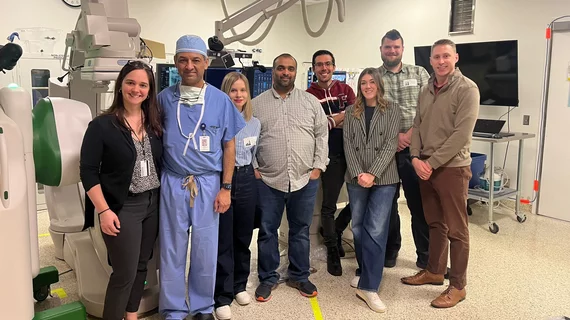Swiss startup targets stroke patients with first US install of robotics system for remote vascular interventions
Nanoflex Robotics, a healthcare technology startup based out of Switzerland, has installed its remote-ready robotics system for neurovascular procedures in the United States for the first time. The install occurred at the Jacobs Institute, a nonprofit medical device innovation center in Buffalo, New York.
The Nanoflex Robotics System includes a compact magnetic field generator and a navigation control unit that help guide flexible devices through the patient’s body. It can be operated at bedside or remotely from thousands of miles away, and it was designed to fit in a variety of different clinical settings.
While the newly installed system can perform a variety of procedures, the company’s first focus is helping specialists perform remote mechanical thrombectomies on acute ischemic stroke patients. According to Nanoflex Robotics, performing these procedures remotely can limit costly hospital transfers and help address patient access problems.
“Robotic neurovascular intervention is undoubtably the future. We are delighted to work with Nanoflex Robotics to prove this concept,” Adnan Siddiqui, MD, PhD, CEO and CMO of the Jacobs Institute and vice-chairman and professor of neurosurgery in the University at Buffalo’s Jacobs School of Medicine and Biomedical Sciences, said in a prepared statement.
“We are thrilled to collaborate with the esteemed Jacobs Institute in New York for the first installation of our robotics system. We believe remote robotics has the potential to transform surgical outcomes and benefit patients by enabling greater and earlier access to critical treatments,” added Matt Curran, CEO of Nanoflex Robotics.

